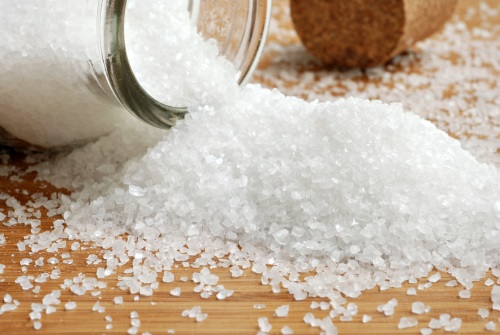In an effort to help people better understand and limit their sodium intake, the American Heart Association (AHA) has launched a new awareness campaign called “I Love You Salt, But You’re Breaking My Heart.”
The campaign includes a website and an online pledge for people to commit to reduce how much sodium they eat, along with a new video, “Don’t Let Salt Sneak Up on You” to show how sodium is sneaking into foods.
Food News International asks AHA more about the campaign and how food manufacturers and restaurant owners can play a part in encouraging consumers to reduce their salt intake.
FNI: How can food and beverage manufacturers work towards reducing sodium levels in products while not affecting taste?
AHA: There are a number of strategies that manufacturers can use to reduce sodium. We held a sodium conference of multi-sector stakeholders in 2013 and several strategies were discussed.
Manufacturers may simply reduce the salt; anecdotal evidence suggests that a 10-15% reduction is often relatively easy.
They can also replace some of the salt with herbs or spices, or use substitute ingredients such as potassium chloride that offer some of the functionality of sodium chloride, but contain less sodium.
Some of these substitute ingredients will have trade-offs, and these are important for manufacturers to consider.
FNI: What creative ways could food formulators do to reduce salt in products without hurting the bottom line?
AHA: Replacing sodium chloride with alternate ingredients can be more expensive, but some that can be used to reduce sodium may eliminate the need for other additives or flavoring agents, which may end up reducing overall cost.
Nonetheless, in some instances, consumers are often willing to pay a bit more for a healthier product.
FNI: Salt has been an integral part of the American diet. What are the challenges do food and beverage manufacturers face when they consider reducing salt in their products?
AHA: Salt plays multiple roles in food, such as preservation, functionality including maintaining the desired texture and taste.
When reducing sodium, manufacturers need to consider the role(s) that salt plays in the product and determine how reducing the ingredient may impact those roles.
FNI: What are the market opportunities for salt-reduced products?
AHA: Many consumers are interested in healthier food options, and a number of them have cardiovascular conditions such as high blood pressure that make them more likely to seek products with less sodium.
FNI: How would the “I Love You Salt, But You’re Breaking My Heart” campaign affect the food and beverage manufacturers?
AHA: The campaign seeks to raise consumers’ awareness about Americans’ excess sodium intakes and the impact that those intakes have on health.
We hope this will lead to increased consumer demand for less salt in packaged and restaurant foods.
In fact, a 2013 consumer survey commissioned by us showed that about 75% of respondents preferred less salt/sodium in packaged and restaurant foods.
We encourage food manufacturers and restaurant owners to reduce the sodium in the foods they produce.
FNI: Are there avenues where manufacturers can participate in this campaign?
AHA: Food and beverage manufacturers can share the campaign website and messages with consumers.
They can also encourage consumers to take the campaign’s pledge to reduce the sodium they eat.
Manufacturers are also welcome to explore participating in our Industry Nutrition Advisory Panel, which is a relationship between our Nutrition Committee and food industry leaders.
FNI: What are your views on industry activities such as the National Salt Reduction Initiative in New York City (NYC) in advocating the reduced consumption of salt?
AHA: Approximately 75% of the sodium Americans eat comes from packaged and restaurant foods.
This makes it hard for people to limit how much sodium they are eating because it is already added to their food before they buy it.
Any meaningful strategy to reduce sodium intake at the population level must involve the efforts of food manufacturers, food processors, and restaurant industries.
We are a National Salt Reduction Initiative partner and support its efforts to reduce sodium in the food supply.
We have recently co-released a Consensus Statement on Sodium with the NYC Health Department.
Signed by more than 30 of the world’s leading scientists, the statement affirms the scientific basis for lowering current sodium consumption levels in the US population.
FNI: What other areas can food and beverage manufacturers look into to encouraging consumers to eat more salt reduced foods?
AHA: One example is encouraging consumers to eat more fruits and vegetables, particularly by replacing other higher-calorie, lower-nutrient foods with them.
Fruits and vegetables tend to be low in sodium, and are a key part of a healthy eating plan.
Secondly, anecdotal evidence suggests that it is more effective to highlight a food’s flavor and great taste than to highlight that it is lower in salt, which many consumers tend to equate with being lower in taste.
Thus, it is important to communicate the flavor of lower-sodium foods to consumers.
Third, evidence suggests that when people are exposed over time to foods with less salt, their taste preferences adapt to prefer the lower level of sodium (and foods that they used to enjoy taste too salty).
This suggests that if sodium in the food supply is gradually decreased, taste preferences will adapt concurrently.












